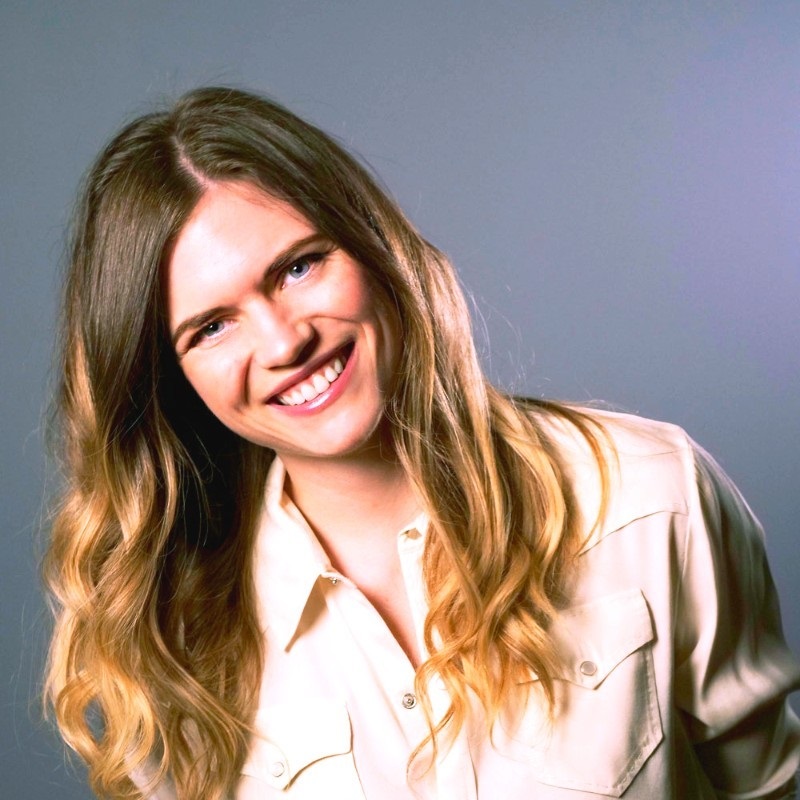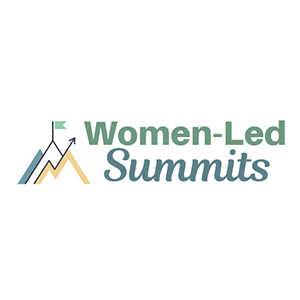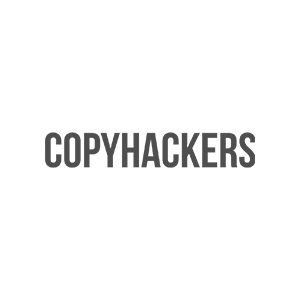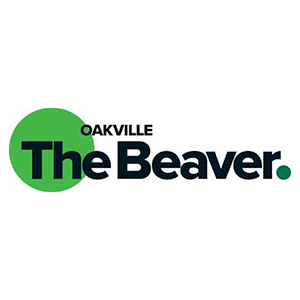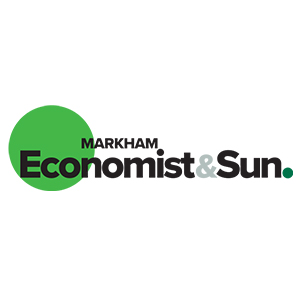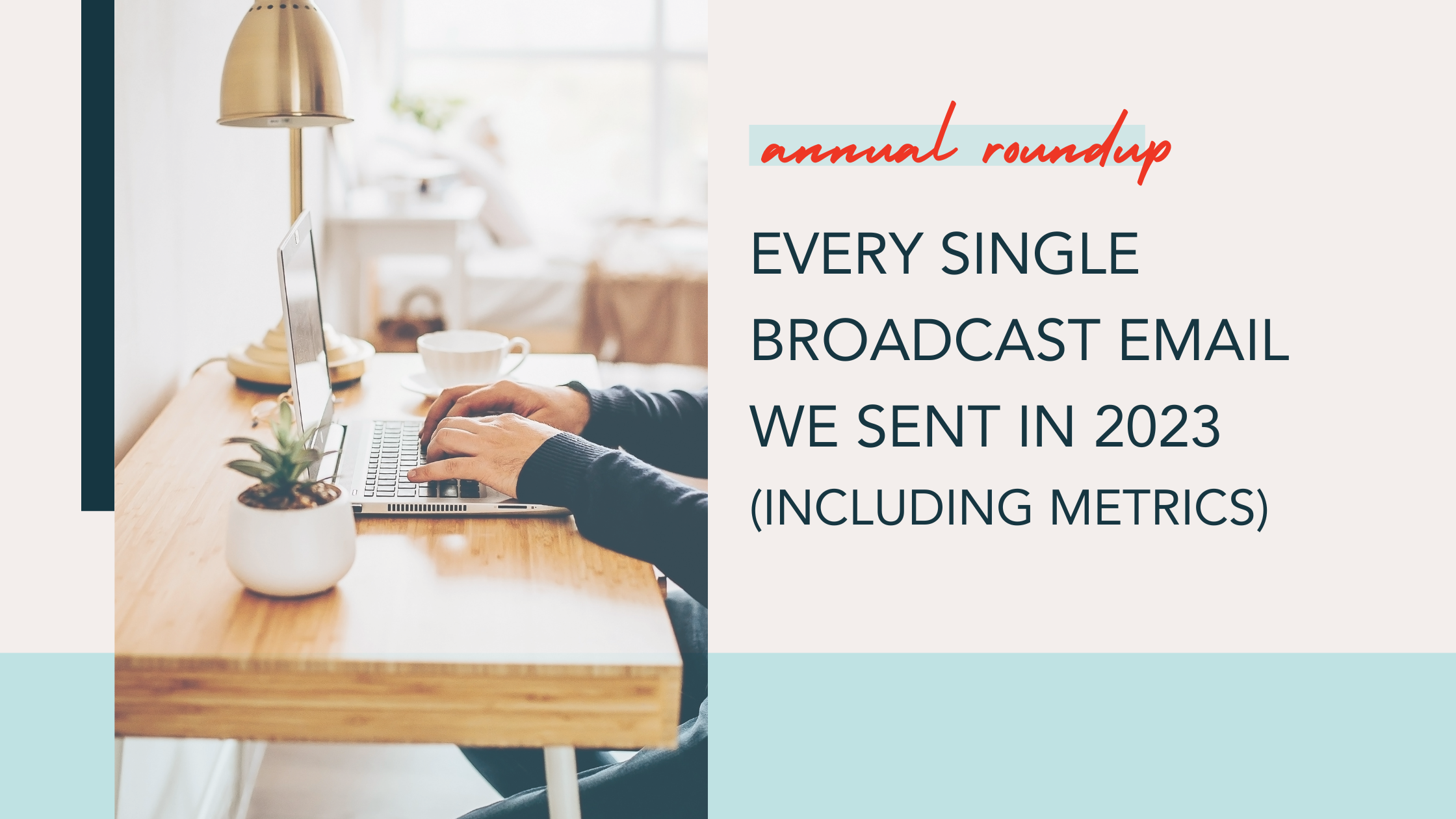
I love email copywriting for clients. It may be my favorite type of conversion copywriting now.
There are a few reasons.
- Emails feel very conversational, which makes email copy fun to write
- Email copywriting is extremely focused and single-minded, usually with one big idea per email
- When writing email copy, I can focus more on the words and less on the wireframe or layout because email design is simpler
- While we love SEO… when we write email copy, we can forget it! (Unlike website copy, where we have to balance persuasion with search optimization)
We also send a lot of emails of our own on behalf of Conversion Copy Co.
Most are email automations (sequences that go out to new subscribers based on their journey). These are largely “set it and forget it” emails that need to be refreshed once in a while but generate business on auto-pilot.
However, we also send out a newsletter to everyone, sharing real-time content. I write about things we’ve learned through conversion copy projects, client results, tips, and tools.
A couple of years ago, I started posting our newsletters to the blog along with metrics and things we learned from our own email marketing.
I started with this post that includes all of the email archives from 2019-2021, my first years using email marketing for the business.
At the end of 2022, I pulled together all emails from that year to share.
In 2023, I wrote fewer newsletters to the Conversion Copy Co list of subscribers. I felt like I was pouring all of my email creativity into client email copywriting, and I didn’t have enough left for the business. But I’m glad that I did keep it up, even if at a less frequent cadence.
These are all of the 2023 newsletter/broadcast emails:
Winning subject: Sharing the reins
Other subject: 2 are better than 1
855 Recipients
38.1% Open Rate
4.6% Click Rate
57 Clicks
6 Unsubscribers
Published Mon, Jan 02 at 10:30am EST
Hey there:)
Happy New Year!
In December, I shared that I’d have news soon.
The day has come.
I’m pleased to announce that Yongi Barnard will support new client services in 2023.
I once called Yongi the “Swiss Army knife of conversion copywriters.” She’s versatile because she’s one of the most knowledgeable conversion copywriters working today.
You may remember that we co-led the value proposition workshop in September. She’s also published on the site in a mega-post on e-commerce homepages.
From working with Yongi several times, I’ve come to admire her strategic mind, polished prose, and utter professionalism.
What does this mean for the B2C brands we work with?
If you book a sales call, 9 times out of 10, you’ll talk to Yongi.
She’ll lead much of the intake, research, messaging strategy, drafting, and wireframing for new clients.
What if you haven’t contracted with us yet, but we’ve been in conversation?
We’ll handle each new project on a case-by-case basis.
If there’s a strong case for working exclusively with me or Yongi, we’ll let you know. Otherwise, you may get the best of both our brains.
Yongi will continue to operate her own SaaS consultancy. SaaS leads the charge in experimentation and optimization, and I’m excited to see how Yongi applies those skills to our e-commerce niche.
Please join me in welcoming Yongi. 🙌🏽 🥳 👏🏼
Anna
Winning subject: What’s harder than brand messaging for clients?
Other subject: Bolton’s Naturals site launch
900 Recipients
31.3% Open Rate
4.4% Click Rate
67 Clicks
7 Unsubscribers
Sent Mon, Jan 30 at 10:09am EST
Hey there,
This is a quick one.
As you may know, my first client was my stepmom.
I’ve spent thousands of hours writing for her company, Natural Calm Canada. (A Clorox brand.)
But Linda also created two product lines of her own: Bolton’s Naturals & Heavenly Sleep.
Until now, Bolton’s Naturals got none of the love. None of the budget. I hoped no one would discover the website and make the connection.
Then, last spring, that changed.
Bolton’s Naturals brought me in to help transform the brand from just a name… to a brand backed by an idea.
Honestly, I was skeptical.
Creating brand messaging is emotional and complex. With family, even more so.
Let’s just say the project almost derailed at messaging.
But by July, I was holed up on a beautiful weekend, writing the website.
6 months later, after much suspense, design, and dev in a black box…
The new branding is live.
Bolton’s Naturals messaging is backed by a visual identity. You can see a truncated version here.
And the newly launched website makes me smile.
It’s 90% my copy, but some of my favorite parts (like the tagline, “Get back out there“) came from my stepbrother, the designer.
This is his hero copy, too.
Basking in the glow of a live project, none of our debates seem to matter much.
This brand is going to sell—more than ever.
And that means Bolton’s Naturals can have a greater social impact. (Read about that here.)
When you’re deep in the work of brand messaging or website copywriting, remember your end goal.
How are you going to feel when this is done? What matters most, ultimately?
Keeping the end state in mind can get you through the toughest parts.
Having an objective outsider helps, too. (We had one for the team: the fabulous and unrelated CEO.)
If you need that objective outsider for your brand, book a call.
Anna
Winning subject: Remember the big fat Greek wedding dad?
Other subject: Larger than life founders + brand archetypes
911 Recipients
39.8% Open Rate
4.2% Click Rate
57 Clicks
5 Unsubscribers
Published Mon, Feb 13 at 10:05am EST
Hey there,
Do you remember the dad from My Big Fat Greek Wedding?
My dad is like that. Only his cure-all of choice is magnesium spray.
“It remineralizes the teeth.”
“I don’t even need sunscreen anymore.”
“It eliminates body odor.”
He’s such a wonderful eccentric that I’ve always wanted to create a personal brand around him.
Another of his passions is making kimchi. (Because fermentation, of course.) We’d call it Doadinski’s Kimchi (a riff on one of his nicknames).
I so want to create that brand.
Finally, we did weave some of his magic into a brand. It’s more like a #couplegoals brand.
Now, with this brand, we had A LOT of personality capital to draw on. Not just my Dad’s personality but his wife’s, too. Personality in spades.
But brands are simplifications.
While we may want to spend a lifetime exploring the curious quirks of real human beings…
Brands? Not so much.
As consumers, we want to figure out quickly, “Is this brand for me?“
Brand archetypes help us do that.
How do you choose a brand archetype?
As a conversion copywriter, the questions I ask are:
- What do we know about the ideal buyers? (Their aspirations, struggles, and daily life as it pertains to the product.)
- If the customer were to meet a guide on the path to achieving their goals, who would that helper be?
- What personality traits are intrinsic to the company?
- What personality traits do competitor brands embody? How can we zag from those?
- Thinking about the promise of the product, what personality does that suggest?
The brand archetype I chose for Bolton’s Naturals is The Explorer.
Choosing an archetype brought focus to our branding exercise, both the visual design and the messaging.
The dark side of focus is reductivism. And it can feel reductive to choose an archetype when you’re in the process. But the result is clarity…
And clarity paves the path to conversions.
The Explorer gave us a container and a focal point to tell my parents’ story and the story of their brand.
You don’t need founders with Big Personalities to have a brand archetype. You just need the commitment to decide and to keep it customer-focused.
If you’re ready for help with that, reach out.
When this goes out, I’ll be headed to southern climes to see how my Dad is getting along with scuba diving — at 70. He says the breathwork is a lot like climbing Mt. Kilimanjaro. Thank goodness for magnesium:)
Take care,
Anna
Winning subject: He handed out twenties on a street corner
Other subject: My client stood on the street corner in Atlanta
918 Recipients
40.5% Open Rate
5.8% Click Rate
72 Clicks
6 Unsubscribers
Published Mon, Feb 27 at 10:06am EST
Hey there,
This is a shout-out to one of the most excellent clients I’ve worked with.
👏🏼👏🏼👏🏼👏🏼👏🏼
(I write this without first checking whether he subscribes.)
Anil signed up for a consultation last summer, on the heels of being hired as Growth Chief of a FinTech startup.
Pesto Mastercard. (Yes, pesto like the pasta sauce. We discussed that. It’s the name.)
Now, SaaS is not usually my thing. But this startup isn’t your typical SaaS.
Pesto Mastercard was created for “the unbanked” — those who live without the banking services most of us take for granted.
Like credit. Which for my entire life, has largely been cheap.
Only, I didn’t realize just how cheap my credit is until I found out what people pay for pawn loans, payday loans, title loans..
We’re talking 300% APR.
|
|
It’s robbery. It’s exploitation of people with too few options. And these predatory loans are legal across many states in the US.
Anil knew that.
But did his ideal customers?
To find out… And to get the voice-of-customer insight I needed to make messaging reco’s and write copy…
Anil did one of the greatest things I’ve seen a client do.
He stood on a pawn shop street corner in Atlanta, Georgia, with a pocket full of twenty dollar bills.
And he asked people coming and going to talk to him for money.
Face-to face. With strangers! For hours.
Then, Anil recorded what they said.
I listened to the recordings later. They were real. Some were hard to hear.
But Anil handled the interviews with perfect composure.
No judgment.
Polite interest.
He got the insight we needed.
And later, Anil went to bat with his legal team to keep some of the raw directness in the new website copy.
(This is a regulated industry, so it can be very tricky to say anything definitive and bold.)
To the point:
Lately, I’ve been recommending that clients do their own interviews if they can, for two reasons.
1) You will never forget what you learned about your customers. It will shape how you speak to them forever.
2) We can often get to finished copy faster, while you save on fees.
Want to be brave like Anil? Me, too.
It’s easier when you work with Conversion Copy Co. because we equip you with the scripts and the know-how.
Book a call via the link below to learn more.
Talk soon,
Anna
Winning subject: “Because I said so” vs. rational marketing
Other subject: Low-key the best CROs I know 🤩
913 Recipients
40.6% Open Rate
5.4% Click Rate
71 Clicks
9 Unsubscribers
Happy Monday:)
I am currently involved in a very frustrating project.
No one you know.
The project team is wonderful… but the higher up you go, the more decisions are made on gut.
Preference.
The direction of the breeze.
Very senior people spend inordinate amounts of time rewriting the copy of other senior people.
|
|
IMO, this is pure ego.
And wasteful.
Because who has time for debates detached from data? Not me.
Which is why I LOVE conversion audits.
Conversion audits will tell you what’s working, what’s not, and where to start fixing your marketing first.
Amazing.
Yet, very few companies take advantage of the insight available from conversion audits.
And a vanishingly few agencies do audits as masterfully as SimplyCRO.
|
|
I’ve been working on and off with SimplyCRO since around 2019, when I wrote their website.
They are a chill bunch of Australians who do outrageously thorough, intelligent work.
Hence, I think of them as the “low-key” best in the biz. Humble. Deferential to data. Lovely to work with.
So, if you are caught up in fruitless debates…
If you want clarity on the path forward…
And if you need to defend your marketing decisions…
Get in touch with SimplyCRO for a conversion audit.
They may tell you that you need conversion copy. If so, we’re here.
Talk soon,
Anna
Winning subject: The client almost said “no way” 🤯
Other subject: How a “damning admission” generated a huge boost 😏
907 Recipients
32.6% Open Rate
0.9% Click Rate
16 Clicks (no link to click except in footer)
3 Unsubscribers
Sent Mon, Mar 20 at 10:03am EDT
Hey there,
When I was a 20-something intern, I spun around in my cube one day to meet the newest hire.
|
|
He was wearing a Euro-style scarf and looked smart.
We became fast friends. Giggled in meetings. Shared ipods. Went to tiny concerts in Kensington Market.
Jeff had one preschooler then.
On book club nights, I’d meet little Emma on her way up to bed.
And then life did that time warp thing. Swoosh.
And suddenly, Emma was my content intern.
For her high school assignment. And then, as a paid freelancer.
At first, Emma’s posts did well.
Later, they did incredibly well.
|
|
By last month…
While Emma was halfway through second year at McGill university, one of her fall 2022 posts brought in 20k visitors to my client’s site.
One post.
In one month.
On one epic topic:
“side effects of magnesium”
(A keyword which, by the way, has an SEO difficulty of about 70/100. In other words, very difficult.)
The client almost said no because the title sounded negative.
Only, the “side effects” Emma writes about in the post are what’s known as “damning admissions” (i.e. magnesium is a laxative) and some are just straight up killer benefits.
Emma is pleased, of course.
But now that she’s shattered my records, she tells me she’d like to write about something “other than magnesium, please.”
Kids these days! Why don’t they just express boredom with gossip and long lunches, like we used to?
I’d like to give her a new challenge. So, if you need content that gets found and gets conversions, reach out.
Talk soon,
Anna
Winning subject: Doing one thing beautifully, with utter care.
Other subject: We’re not selling logs. We’re selling fantasy.
905 Recipients
43.1% Open Rate
8.3% Click Rate
177 Clicks
1 Unsubscriber
Published Mon, Mar 27 at 10:03am EDT
Hey there,
At a lookout in Puerto Vallarta, we met a Canadian couple. From cottage country. They were thinking of building a dream home.
I mentioned my client, Confederation Log Homes.
They oohed. They aahed.
Because here in the north, Confederation is the stuff of which lake and alpine dreams are made.
|
|
But even for a heritage brand, the Confederation site was too heritage. Due for a complete overhaul. That’s how I got involved.
You might be wondering…
How does conversion copy work with bespoke brands?
Confederation is not selling en masse, after all. It’s a high-touch sale. And the data sets are as sparse as two-wheel drive vehicles in Bobcaygeon.
That’s the challenge.
Even so, we did have data.
And it told us this:
Buyers dream about their home design for years. They pore over floorplans. They avidly open emails and hit reply like Confederation is a pen pal.
So, we created a site that offers plenty of fodder for fantasy…
But also a site that offers plainspoken reassurance. Because investing at this scale can be scary.
And, we made it personal.
We brought the warm, genuine, salt of the earth voice of the Confederation family into the copy.
That’s why one of my favourite pages is the About page.
|
|
I love the craft brand spirit that I hope comes through. The dedication to doing one thing beautifully, with utter care.
Also note the differentiation is subtle. There’s no “competitor versus” chart, for example.
That’s because we’re not selling logs or labor.
We’re selling a dream. We’re selling the confidence that Confederation can fulfill that dream better than the competition.
High-end sales are highly emotional:
A design that makes you gasp.
A smile that disarms you.
A vision of your grandkids on a very particular front porch.
The job of the copy is to bring those positive feelings into the site.
So, when I wrote it, I thought of people like that couple at the Puerto Vallarta lookout. People who, in their hearts, see home as a log cabin in the woods.
Le sigh.
Doing this work reintroduced me to my own inner craftsperson. It was wonderful.
If you know of craft or heritage brands that need conversion copy, send them our way.
Thank you,
Anna
Winning subject: Template for your brand ideas 📦
Other subject: “Why aren’t they replying?” (Template inside)
903 Recipients
33.4% Open Rate
7.3% Click Rate
90 Clicks
4 Unsubscribers
Sent Mon, Apr 03 at 10:04am EDT
Hey there,
We all know the rule of messaging.
I send one message. If you don’t reply, I wait.
Maaaybe, I send a second message. Never a third before you reply.
This applies especially in vulnerable social situations.
And branding makes nearly everyone feel vulnerable…
But there are exceptions.
Some people feel no vulnerability.
I once watched in horror as a senior executive — driven by an intense creative urge — sent SIX consecutive emails to his entire team.
All with the repeated subject line, “Branding ideas for you to consider.”
One after the other. (RE: RE: RE:)
Sometimes with brand ideas in different fonts and different colors.
But with no rationale to back the ideas.
For the record, he was not in creative services.
He was not even the final approver.
And not a single person replied.
I felt so exposed and vulnerable on his behalf.
“Why aren’t they replying?”
“Why doesn’t he know the rule?!”
When the last email started with, “Me again…” I wanted to give him a virtual hug.
And tell him to stop; please stop. Because those are two words you should never have to say.
Most of us know someone who missed their ad agency calling. They’re bursting with creativity, often trapped in an uncreative job. But because creativity is not their discipline, they don’t have the rigor.
It starts with a mindset shift:
I am not the audience.
It’s almost a spiritual realization.
A very necessary self-negation.
Because only when you set yourself aside can you create space for the customer; for what they need to see, hear, feel, and believe before buying.
The customer is the only audience whose opinion of our brand matters.
This isn’t a new idea. And yet, very few companies are truly user-centric. That’s why branding exercises can be painfully drawn-out, ego-driven, and ridden with passive and not-so-passive aggression.
It’s also why that executive’s team did not reply. Their branding project had long been hijacked by executives’ personal opinions and pet phrases, and they were demoralized.
For five hours, I left that stack of six emails unanswered, glaring at me.
Finally, I knew what to say.
“We all want to get this brand approved. Let me tell you what works.“
And then, I shared the technique that has saved me from countless tedious semantic debates.
The tactic that keeps me from falling in love with my worst ideas.
The strategy that gets my work approved fast, with very few revisions.
It’s this:
🎱 Start with customer insight. 🎱
And when you’re selling your brand idea, prime your audience. Tell them, “This is what our customers care about.”
Show the evidence: your customer research.
Never in my career has an executive shot down my recommendation when I demonstrate that it’s founded on data.
So, it’s not only the *right* thing to do because Copyhackers, Conversion XL, and every UX guru say so. It’s also the most expedient. And the most socially savvy.
You don’t have to open the creative recesses of your soul in quite the way people think.
You’re just a conduit for the (brilliant) ideas that emerged from insight.
How much more powerful is that?
📦 To that end, I’m sharing a template I used with the team to evaluate their brand ideas. You can make a copy in your Google drive and use customer insight to assess your options objectively. There you go. 📦
If you want data-driven brand messaging, book a meeting via the link below, and Yongi Barnard will tell you more.
Talk soon,
Anna
Winning subject: E-comm conversions are more fun (11 reasons why)
Other subject: 11 reasons I ❤️ e-comm copywriting
910 Recipients
30.0% Open Rate
4.1% Click Rate
47 Clicks
3 Unsubscribers
Sent Mon, Apr 24 at 10:03am EDT
Hey there,
On Friday morning, I got up at 5:30am for a 6:00am client copy coaching call.
Early mornings are not my thing, but I love it anyway.
Because even if I’m yanked out of REM, when I log into Zoom 30 minutes later (with a giant Bodum at my side), this kind of consulting is FUN.
It took me forever to just give into the fun and specialize in e-commerce. But in retrospect, it was the obvious choice.
I’ve written about WHY in the newest post on the blog.
|
|
I also write about the wildest product sample we ever requested…
(Not sure how Yongi thought she and I would test it!!!)
Still waiting on that one…
Another of the best inquiries we’ve ever received was from a high-end leather harness e-commerce brand. And I’m not talking about harnesses for equestrian purposes!
In e-commerce, you see it all. And I love that. The rich tapestry of life online.
If you know of e-commerce brands who need to see this post, please share.
Thanks and talk soon:)
Anna
Winning subject: Are you “out of touch”?
Other subject: How to avoid the groans
912 Recipients
29.2% Open Rate
0.4% Click Rate
6 Clicks (no link to click except in footer)
2 Unsubscribers
Sent Mon, May 01 at 10:15am EDT
Hey there,
Have you ever read someone else’s copy and thought, “Ugh, so out of touch. The privilege! They don’t know what my life is like.“
I have. I’ve also written the copy that makes people feel that way, unfortunately.
Am I alone in this? Nah. It’s practically unavoidable.
Whatever you take for granted…
Your luck in love, your little nose, your postal code, your close clique of school friends, your happy family holidays, your Friday night Uber Eats…
It’s out of reach for someone else.
And we’re most at risk of sounding like this…
|
|
When we’re bathed in well-being.
When we’re…
- Out of the trenches where we battled to build our brands, we forget what customers said to our faces.
- Flush with cash, we forget that ‘buying less, buying better’ isn’t obvious for everyone.
- Privileged with the luxury of time, we forget what it’s like to choose between a workout and a healthy meal.
- At our perfect BMI, we can’t know what it’s like to perpetually believe, “For her, but not for me.”
- Firing on all cylinders from a combo of wheatgrass and weekend retreats, we can’t remember what it’s like to feel so damn tired.
It’s dangerous to have the mic when life is good.
Immediately after a nice vacation? We are unbearable human beings. Truly.
We broadcast ideas that alienate the very people we want to pull into the warmth of the sun that currently shines on our lives.
It’s why celebrities should be seen and laughed at, not heard!
|
|
And it’s true of brands, too.
B2C brands (my specialty) have been insensitive for so long, that I grew up assuming that alienation is the normal way to feel in relation to marketing.
Alienation + aspiration. That was the formula.
But we’re not in the 90s anymore.
There’s a whole crop of DTC brands that created their fame by being relatable.
Because they stayed close to the problem. They closed the alienation gap.
So, how to maintain that in our marketing?
Even when you’re on a high?
Even when you can hire that fancy agency that recruits exclusively cool folks?
Short of daily meditations on the universal nature of suffering…
There are some very practical techniques.
When you survey and interview your audience, be sure to ask questions like…
- “What was going on in your life when you decided to look for…?”
- “What is holding you back from…?”
- “How would you describe life with/without (fill in the blanks)?”
Then, really listen to what they say. Listen for the feeling. Listen for the underlying truth about their lives.
Then, reflect it in your copy.
In your visuals.
In your customer experience.
If you need help with this for your B2C brand, book a meeting via the link below.
Yours,
Anna
Winning subject: *This* says more about you
Other subject: What it’s like to be publicly “replaced” by AI
949 Recipients
37.5% Open Rate
4.2% Click Rate
59 Clicks
4 Unsubscribers
Published Mon, May 29 at 10:03am EDT
Hey there,
It is weird being so publicly “replaced” by AI.
People in my life send me newsflash messages of the “Wow, Dr. Phil says copywriters will be the first to go” variety.
Thank you.
My mom asked, “How will you pivot?” (Where did she even learn that word?)
Then there’s the constant speculation.
It’s all we talk about at parties now.
“Taste will become more important than ever,” says my friend, Darrick, a tech exec at an AI chip company.
Well, ok. Darrick is defined by his good taste.
“Emotional intelligence will become the defining human trait,” said an ex-Google couple I just met.
He’s a leading machine learning scientist and she… works at an EI training company.
Copywriters who sell courses say things like, “Don’t get left behind! Copywriters who harness AI will 10x more profitable than ever!!!”
Maybe.
But what I really think?
We don’t see AI as it is. We see AI as we are.
We see it as we wish the world to be.
It’s a mirror of our beliefs, hopes, fears.
I caught myself thinking, “Yes, but AI can’t tell you what data matters. Or where to look.
It can’t tell you why copy converts or doesn’t.
And it certainly cannot tell you how to differentiate.”
For now.
But that was always the work I enjoyed most. The ideation. Not the piecing together of words.
My own bias is to believe this:
There’s a special human intelligence that surpasses AI when it comes to strategy, like brand messaging.
It’s some alchemy of creativity, human insight, pattern recognition, synthesis, point of view…
And it’s unique.
For now.
Chat GPT-4 can craft any copy you like, but unless you know the WHY behind the copy?
It will read like filler.
Clients have shown me their AI copy.
My reaction is, “Yep, sounds like copy. Like placeholder copy. Like any brand’s copy.”
AI copy that leaves you utterly unmoved is not conversion copy.
Will this human advantage last?
Not likely.
But for now…
In the coming months or weeks…
Before knowledge workers of all kinds are replaced en masse…
Brands still need human intelligence to guide the tool.
To hire ours, click below and book a discovery call.
In the meantime, I’ll be looking into med school. Kidding. Kind of.
Yours (facing the brave new world),
Anna
Winning subject: I asked ChatGPT4 to describe my writing
Other subject: How we’re using ChatGPT4
1,026 Recipients
35.4% Open Rate
13.1% Click Rate
272 Clicks (even though only link was in footer!)
7 Unsubscribers
Sent Mon, Jul 31 at 10:16am EDT
Hey there,
There are copywriters who use ChatGPT4 at levels I haven’t reached.
Yongi Barnard (who leads projects at Conversion Copy Co) can do incredible things with our conversion copy research. Her AI prompts are blowing my mind. We’re saving time and giving clients even more confident recommendations.
However, I personally find ChatGPT4’s style a little irksome. It’s the tone.
When I use Chat to get out of a slump, the feedback I most commonly deliver to GPT4 is “Tone it down.“
Instead of over-the-top, flowery copy larded with adjectives, Chat then gives me boring copy. Le sigh.
Surely, others who are still writing more than I have discovered the secrets of squeezing good style out of AI.
So, it occurred to me… what if I ask Chat to describe my writing?
What if I find out how I sound to AI so I know how to tell it what I want?
And so I did.
Which led to instant delight and self-knowledge.
Here’s how Chat described my email. (I removed information that could identify the client’s brand.)
“The writing style showcased here can be described as:
- Conversational: The author uses a casual, familiar tone that makes the reader feel as if they are in a face-to-face conversation. The language is relaxed, accessible, and inclusive, creating a friendly rapport with the reader.
- Authoritative: The writer demonstrates their expertise and knowledge in the field. The use of first-person perspective (“I’ve been in the farm-to-table scene…”) establishes credibility and gives weight to the author’s statements.
- Detailed: The text goes into intricate detail. The author uses these details to effectively communicate the quality and rarity of the product, as well as to justify its premium nature.
- Engaging: The use of rhetorical questions, exclamatory sentences, and enticing language draws in the reader, heightening their interest and curiosity.
- Persuasive: The overall aim of the text is to convince the reader to purchase the product. The writer employs persuasive tactics such as scarcity (“this delicacy is as rare as it gets”), a time-limited offer, and vivid descriptions of the product to appeal to the reader’s desires and to motivate them to take action.
- Informative: Despite its persuasive aim, the text also offers valuable information about the product, the process of its creation, and even tips on how it can be served. This style of writing doesn’t just sell – it educates and informs.”
Why thank you, Chat:)
I still find I can write myself faster than I can get Chat to give me polished copy.
At least, this is true for email and website copy, where style is essential, and we can’t accommodate filler fluff.
Thought I’d share this bit of fun on a Monday morning.
How are you using AI?
Yours,
Anna
Winning subject: Orwell throws serious shade
Other subject: Orwell and AI writing
1,071 Recipients
33.9% Open Rate
23.2% Click Rate
772 Clicks
1 Unsubscriber
Sent Mon, Oct 09 at 1:08pm EDT
Hello there,
Life is exciting. I’m folding laundry and listening to an audiobook.
But I had to stop and share this.
George Orwell: Politics and the English Language
|
|
(Not an affiliate link)
If you write anything, ever, you should read or listen to this scathing essay.
It could have been written for conversion copywriters…
For brand copywriters…
For anyone tinkering with ChatpGPT.
The problem with bad writing, whether human or AI-generated, is that it means too little.
It’s padded. Diluted. Worn out.
It sounds like sense… but if you rally to think for a moment, you’ll realize it says almost nothing.
Copywriters have always had to kill this tendency. Force precision. Specificity. Novelty of expression.
Now, we have AI. It takes so little to generate “copy.” It’s so easy to say, “Good enough.”
Before you hit publish on that AI copy, first read or listen to Orwell’s essay.
Then, every time you review your brand’s copy, ask:
Would this move anyone to action?
That’s the essence of conversion copy. It drives action.
Just like Orwell’s words (almost 80 years after publication) drove me away from the laundry pile to write this email. That is lasting persuasion.
Yours,
Anna
Winning subject: I didn’t expect results like this!
Other subject: Here’s where I DO recommend AI
1,079 Recipients
38.6% Open Rate
18.7% Click Rate
363 Clicks (odd, again, because only link was in footer!)
5 Unsubscribers
Sent Mon, Oct 30 at 10:32am EDT
Hey there,
Last summer one of my most loyal, favorite clients asked me to write their application for a prestigious award.
No problem, I said. We’ve done this before. We’ve won before.
Only this time, everything changed. The questions were unexpected and completely open-ended.
None of the materials my client had sent were remotely applicable. We were starting from scratch, facing essay after essay.
“I’ll be honest with you,” I said. “With these timelines, we’re going to need to use AI. You send me what you’ve got.”
I don’t remember how I reworked the text or the prompts I used to refine the results. But I can tell you that AI took the drudgework out of longform writing.
Chat expanded on raw materials, drawing out ideas and, frankly, padding the arguments. Instead of building content, my job was to shape and sharpen.
It was a beautiful collaboration.
“I’m proud of this,” my client said. “Me, too,” I agreed.
And then we waited. And waited.
And when the client was shortlisted, I couldn’t believe it. “Look at the other companies on this list,” my client said. “They’re huge.”
That would have been enough. But we won.
My client won an award that confers credibility worth, by my estimate, multiple millions in revenue.
The essays that proved their company is deserving? Those took approximately 10 hours.
The takeaways?
- Chat’s strengths are verbosity, expansiveness, conventionality. Use it accordingly.
- An experienced writer is still required. AI just elevates the role of that writer.
- You might cut your time by a third or in half, but there’s nothing instant about it.
What about you? How are you using AI now?
Yours,
Anna
Winning subject: Conversions are a little like parenting
Other subject: Fast results or enduring results?
1,083 Recipients
33.4% Open Rate
4.7% Click Rate
65 Clicks
7 Unsubscribers
Sent Mon, Dec 04 at 10:04am EST
Hey there,
I was thinking about how conversion copywriting is like parenting.
Or like coaching any other human being.
The most powerful advice that has guided me in attempts to shape or change other human beings is this:
“Immediate cessation of behavior is not the goal. A long-term relationship is the goal.”
I paraphrase a child psychologist whose positive parenting I haven’t always been skilled enough to follow. But I have never given up on the belief that what she says is true.
We can always get results through extreme or harmful measures. If I were willing to go hard enough, I could stop any behavior, stat.
In fact, my kids will sometimes lobby for that extreme. I.e. “Why don’t you just punish my brother?”
The answer?
I’m more interested in shaping the human over the long term than ending the immediate pain.
And I’m more interested in building trust.
It’s like that with conversions.
You can get more conversions faster by leaning harder on the levers of direct response. More pain, more urgency, more instinctual desire.
However…
Many of us are in business for the long haul.
That’s why we need to use our powers wisely.
Because we want those customers to buy again and again, and to tell others how delighted they are with our brand.
When we create conversion-optimized brand messaging (your brand’s Conversion Copy DNA), we’re focused on your sales today… but also your growth into the indefinite future.
Talk to us about how we can create brand guidelines based on your customers’ unique psychology, and the ideas that will compel them to fall in love with your brand for good.
Here’s where to book a call: https://conversioncopyco.com/contact/
Yours,
Anna
That was it for Conversion Copy Co.’s 2023 emails
We really didn’t sent a ton of newsletters, but as mentioned, the automations run in the background. The list grew slowly with no new lead magnets or list growth initiatives, and the click rates stayed high — even though I didn’t always include a link in the body of the email (just in the footer). So, overall it’s clear that the email list survived with even less effort!


